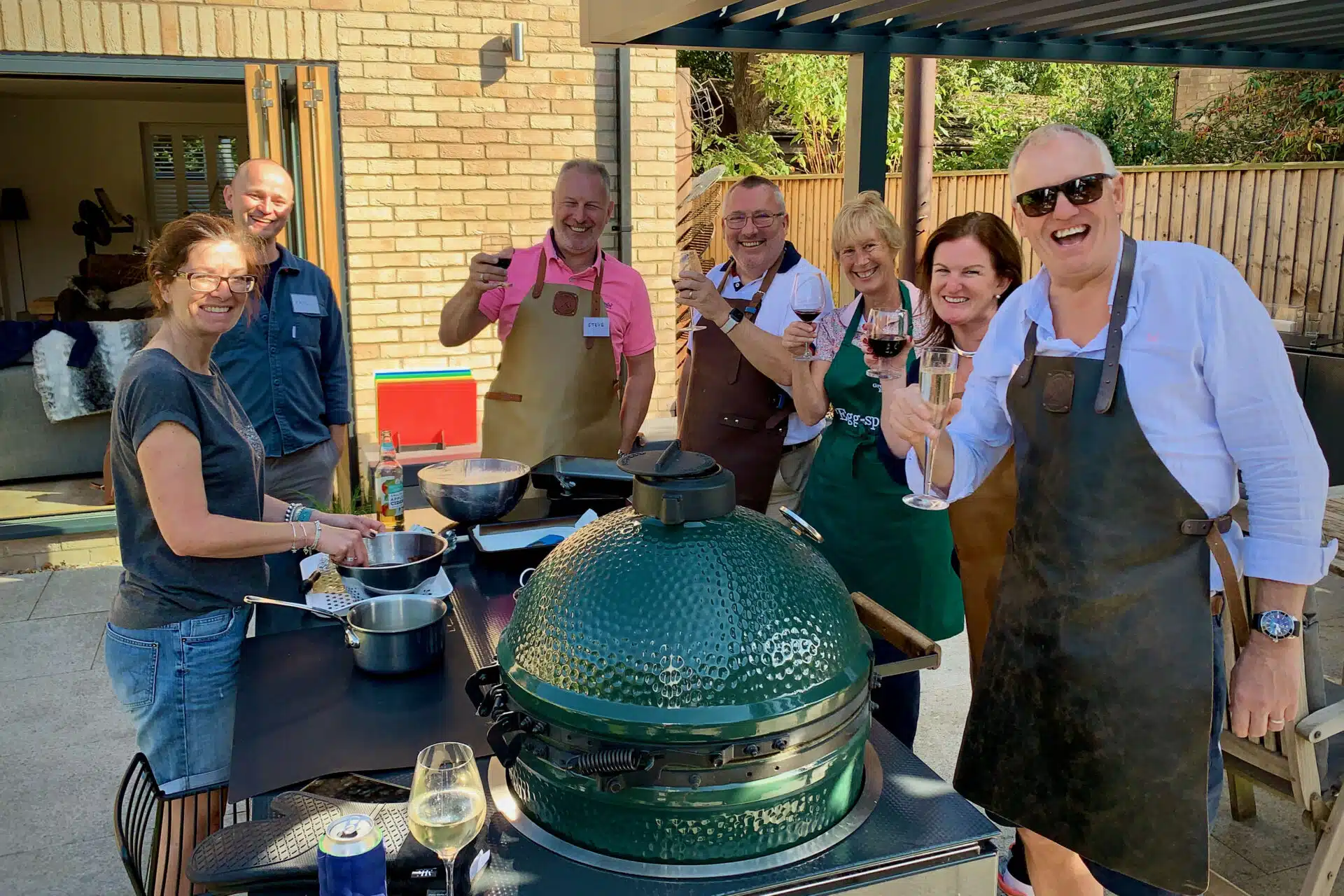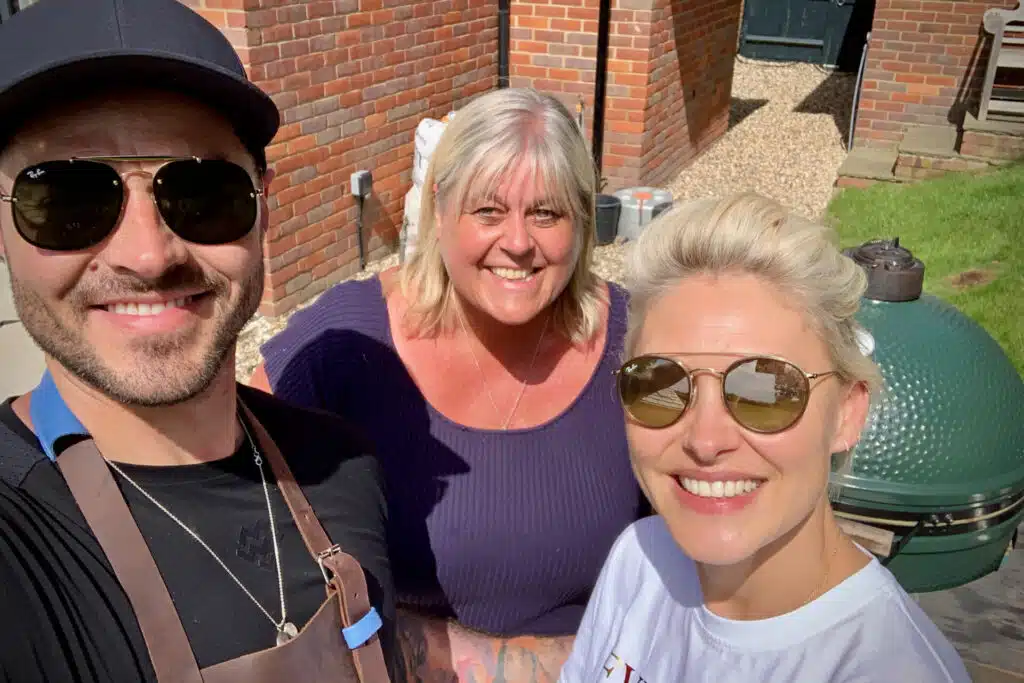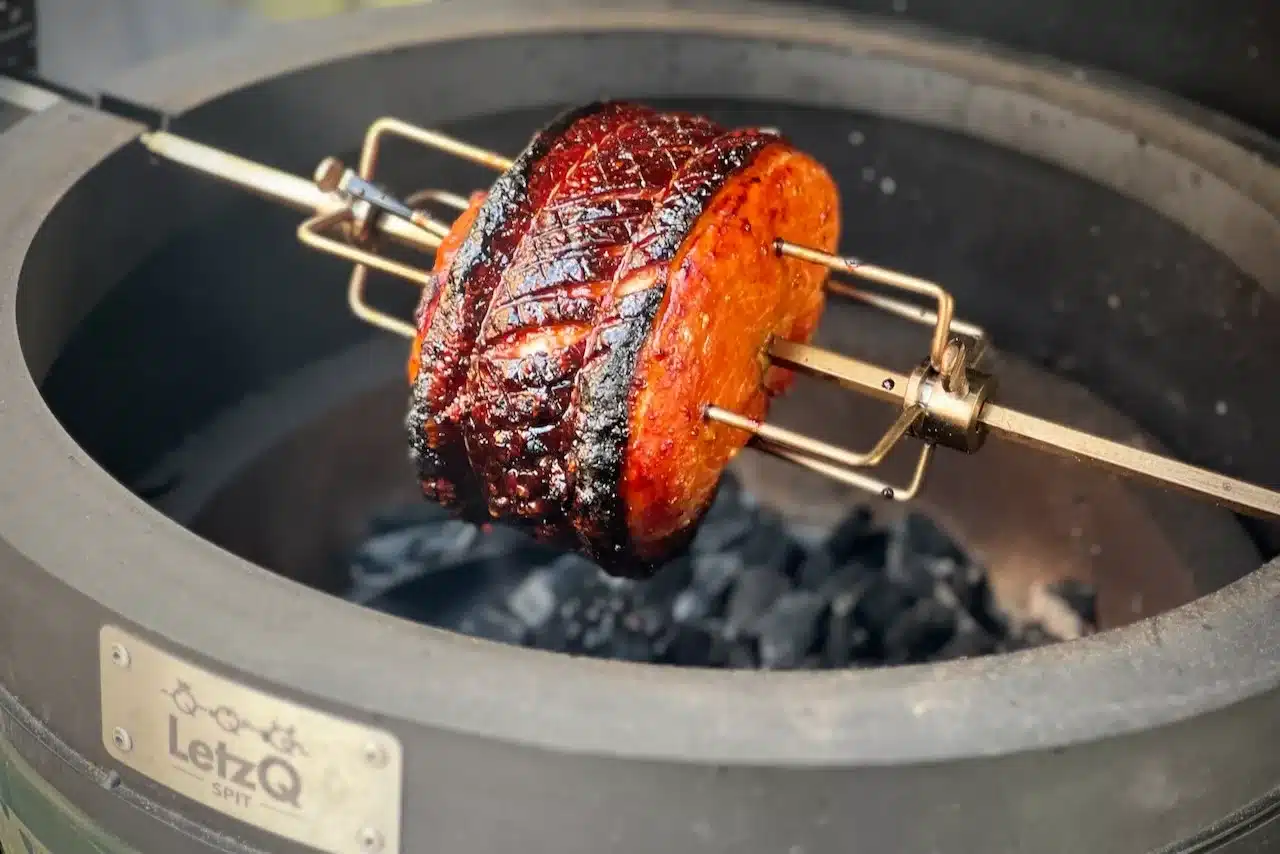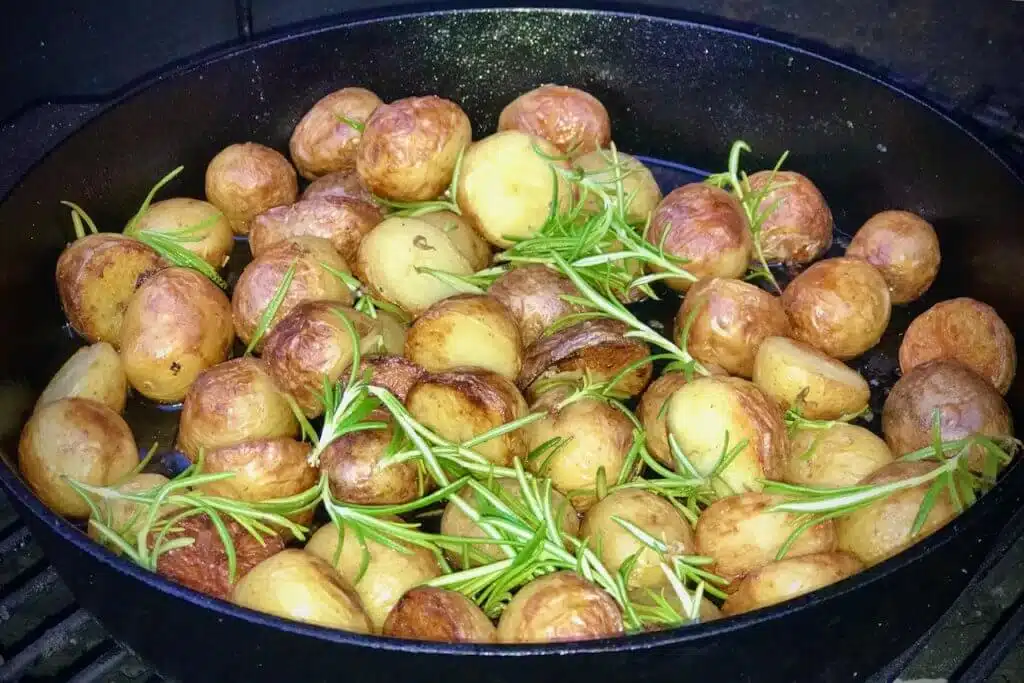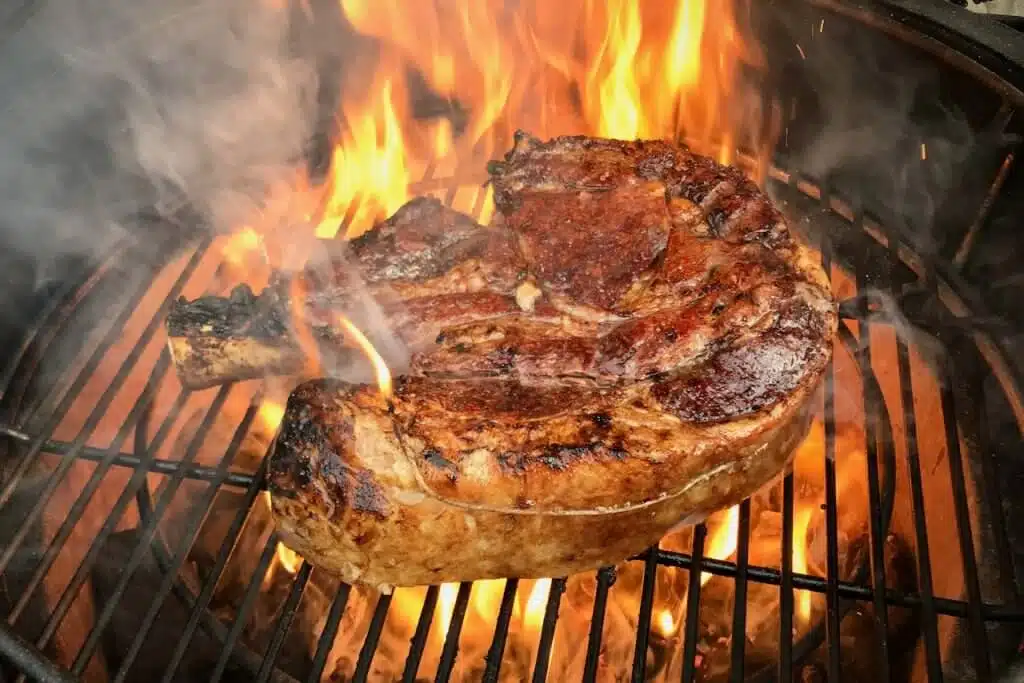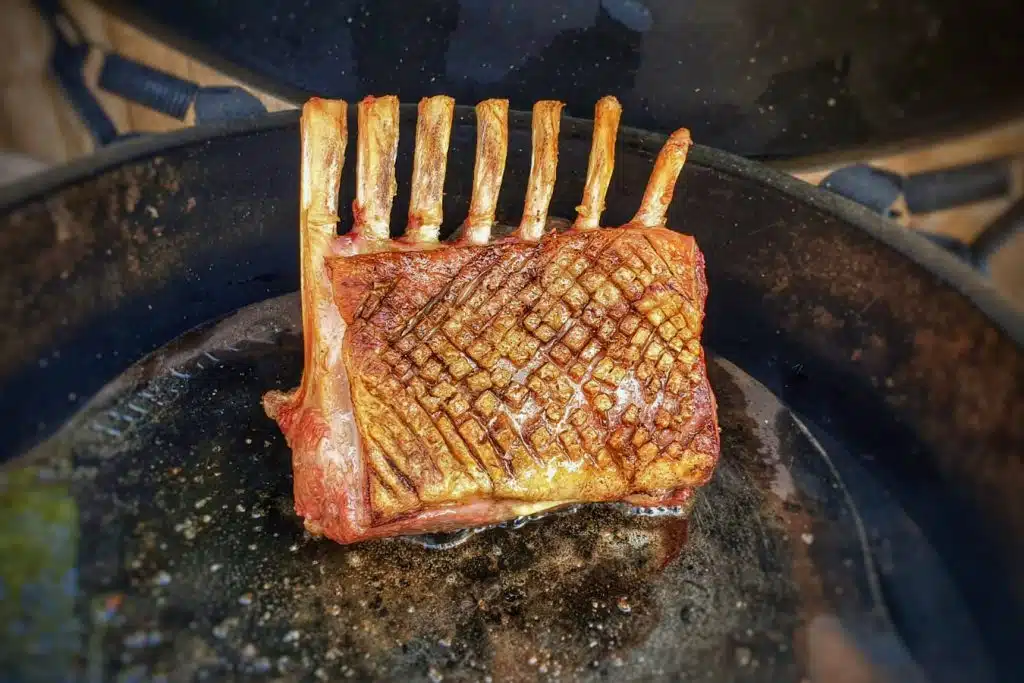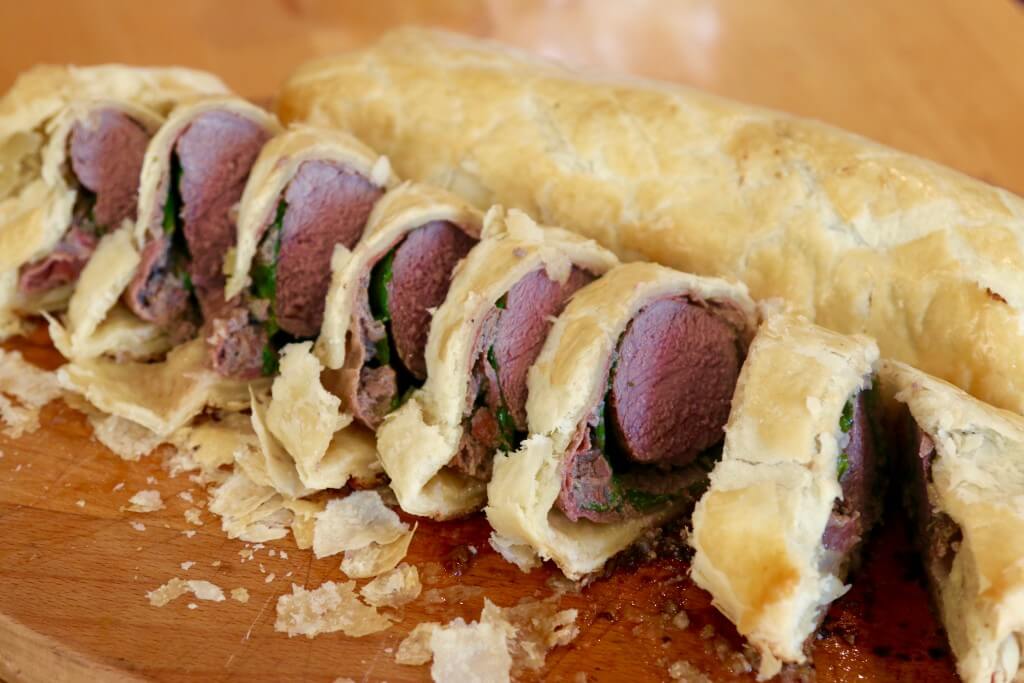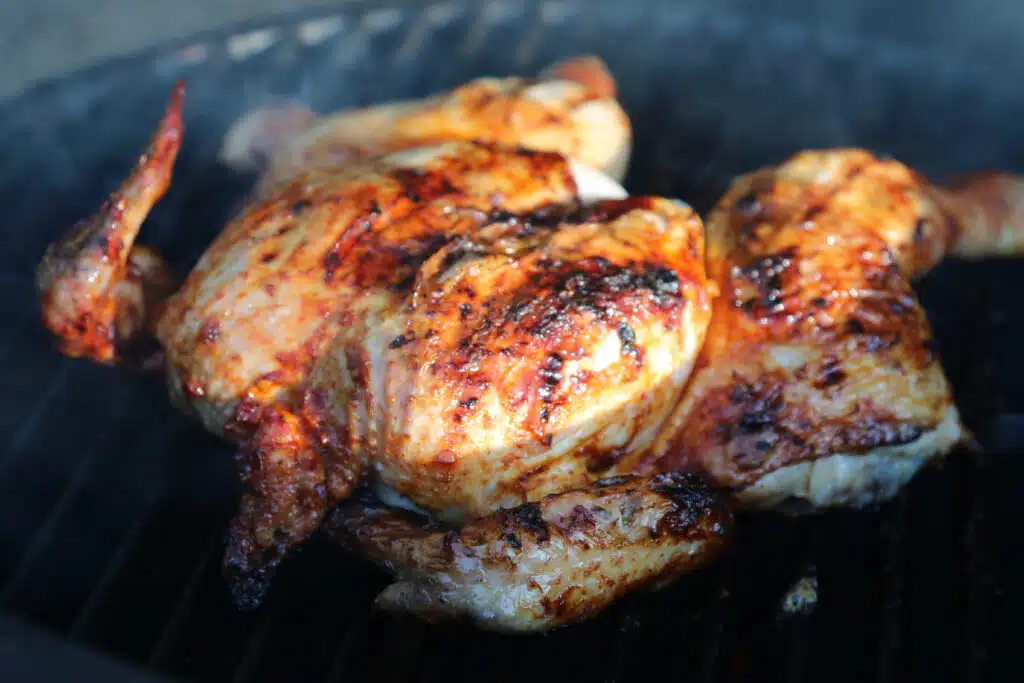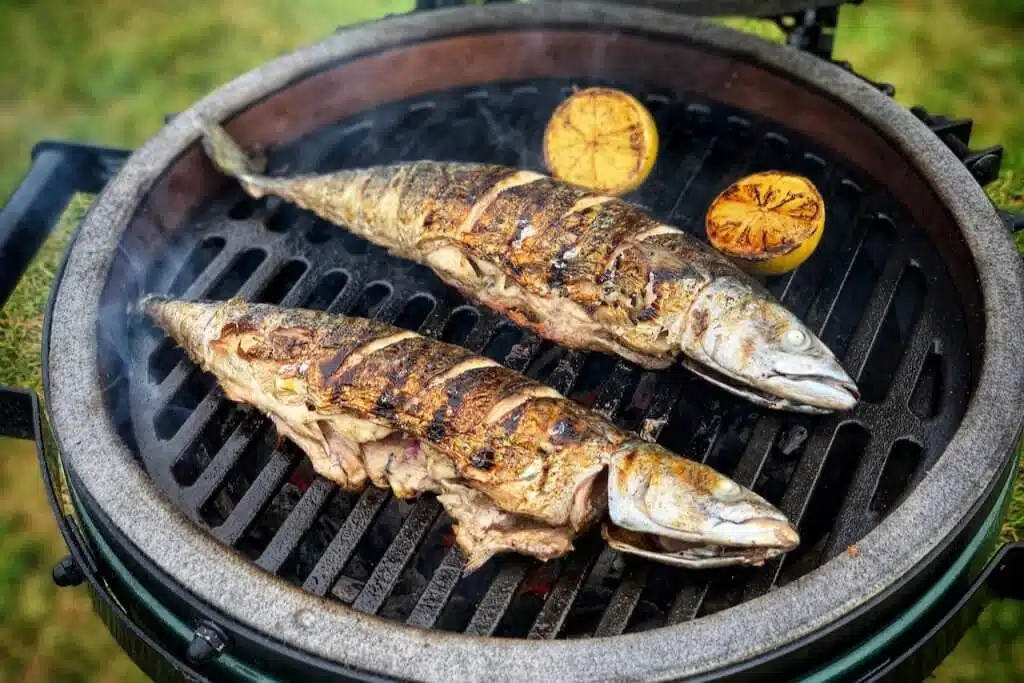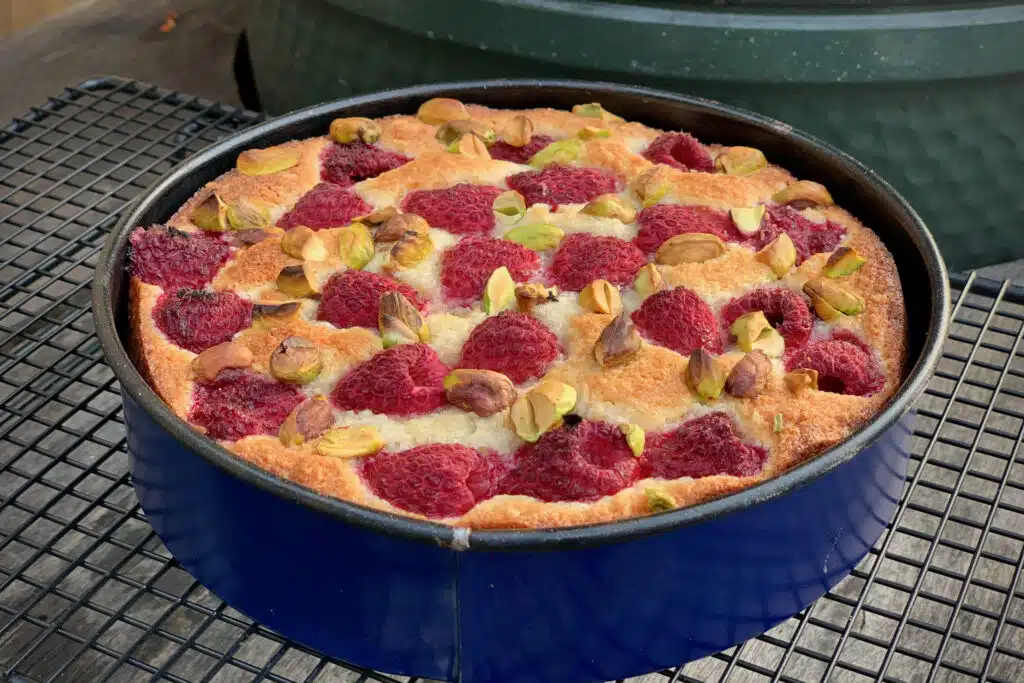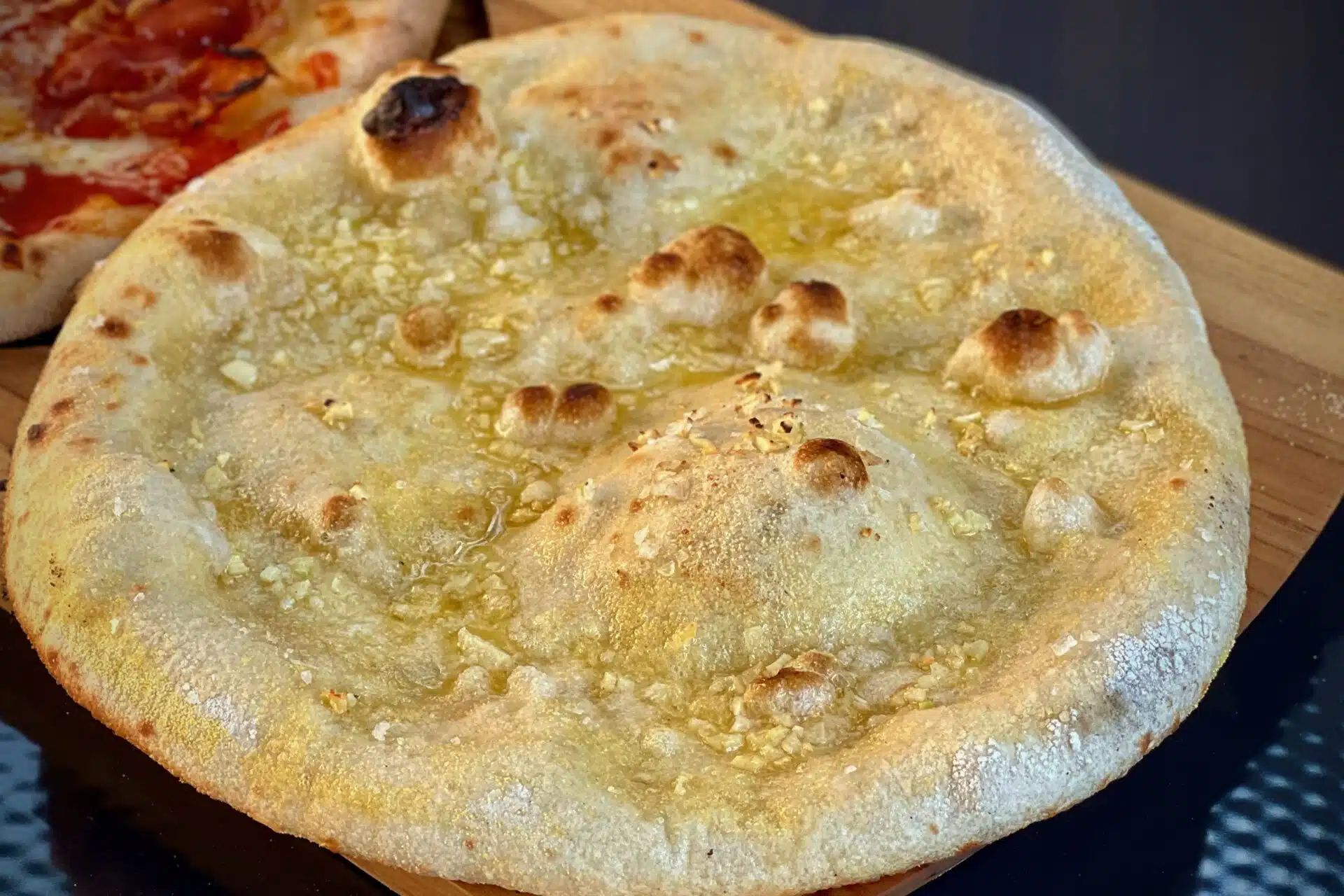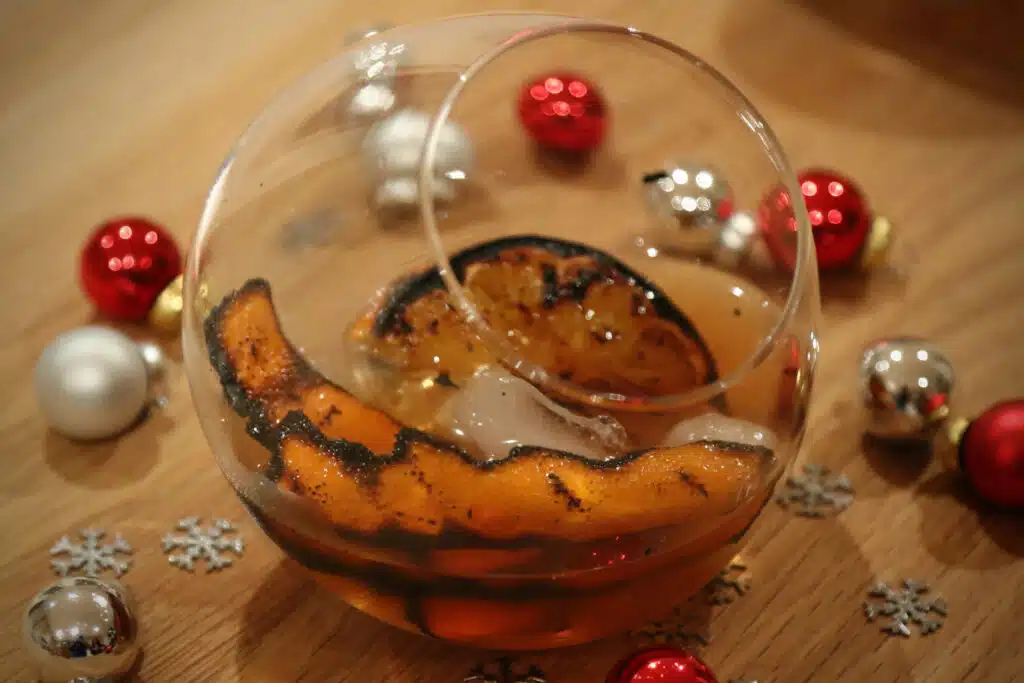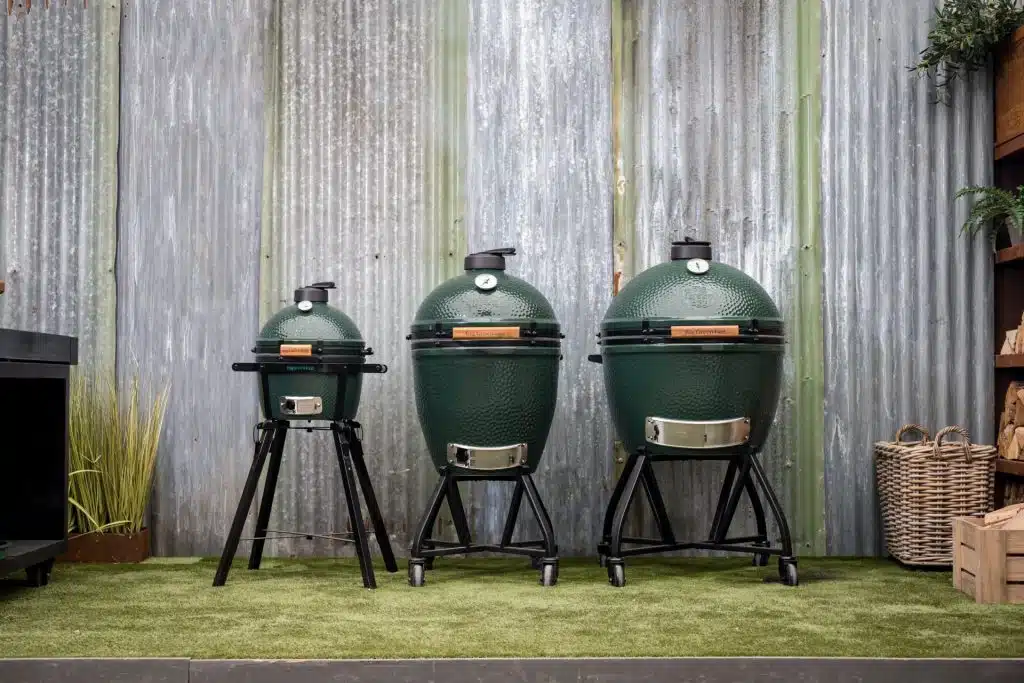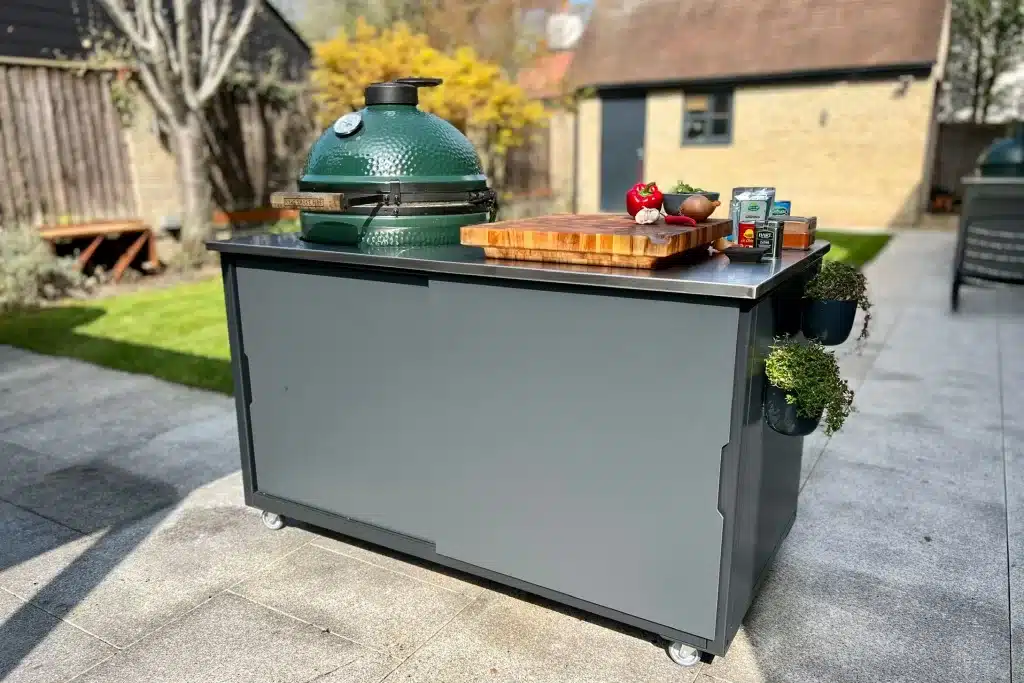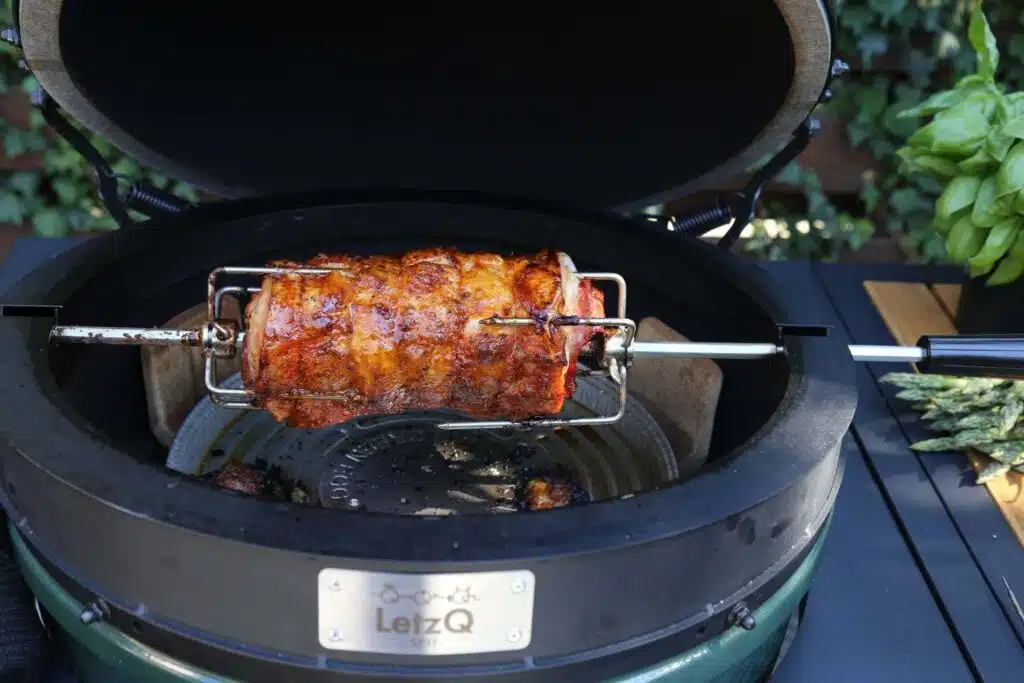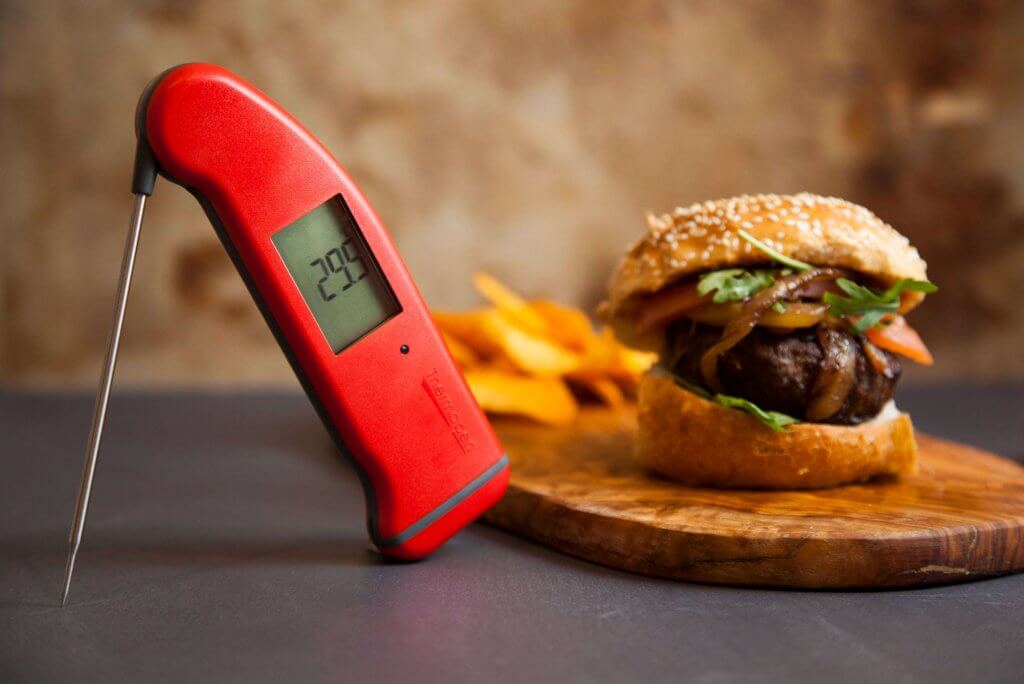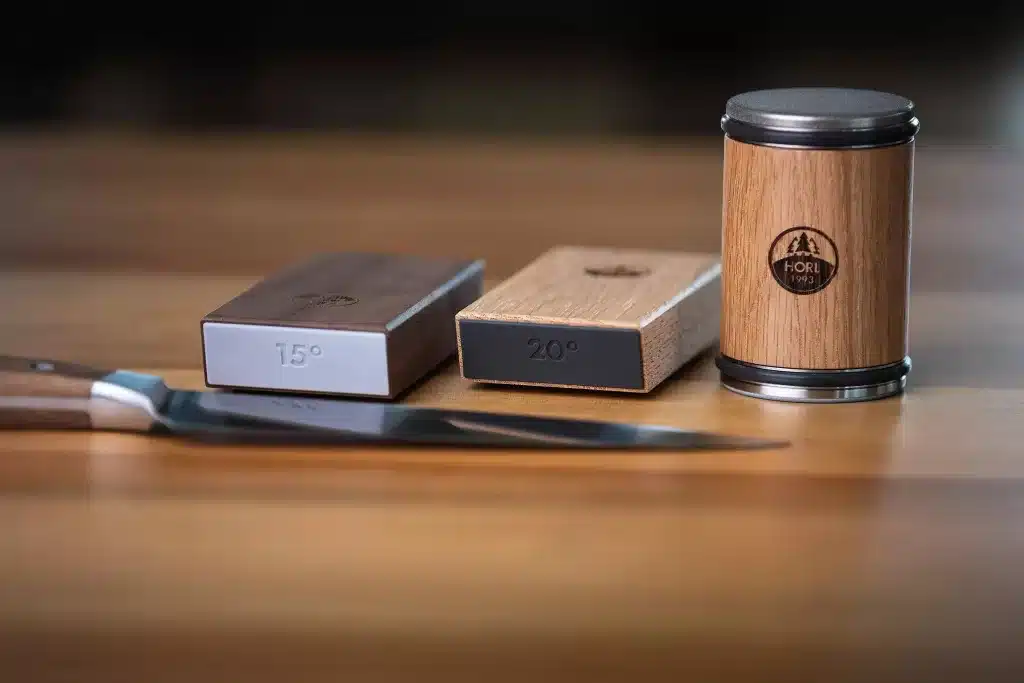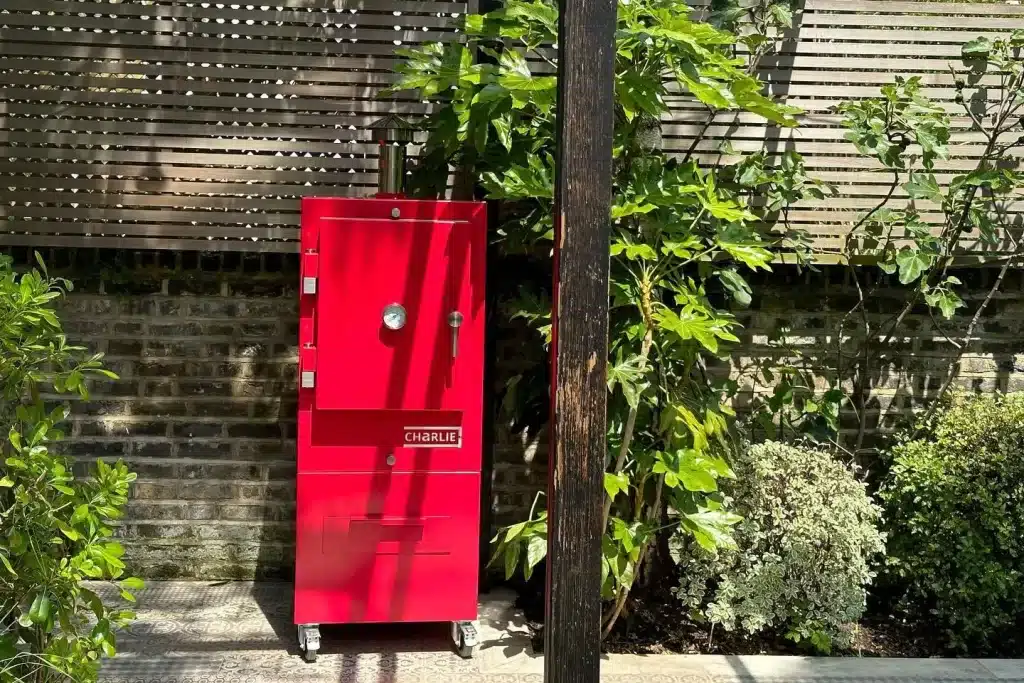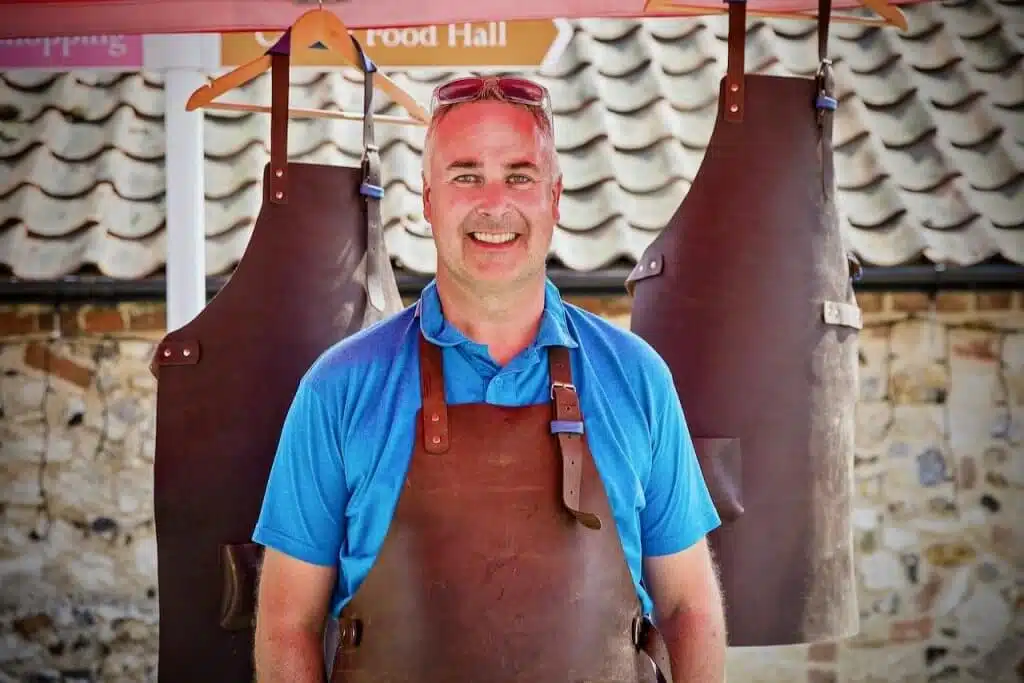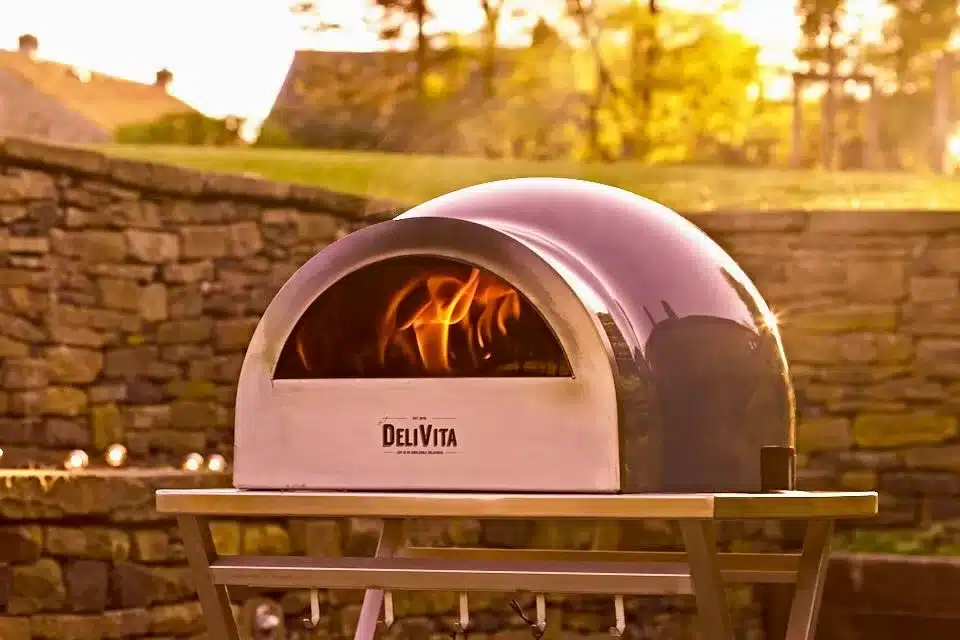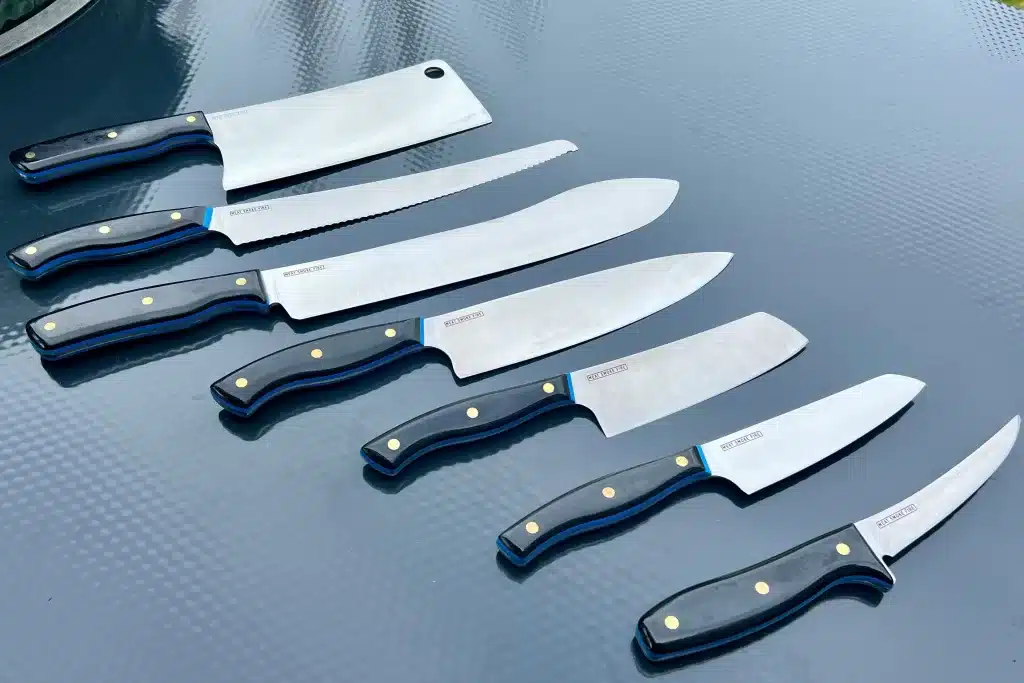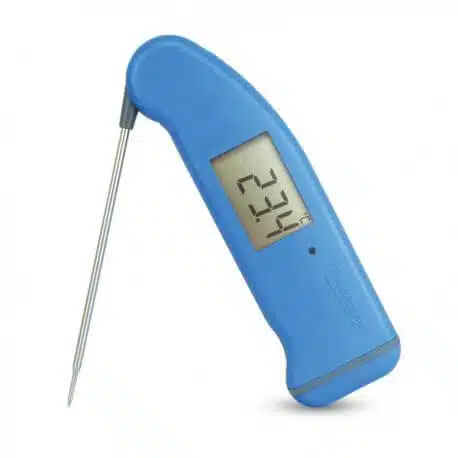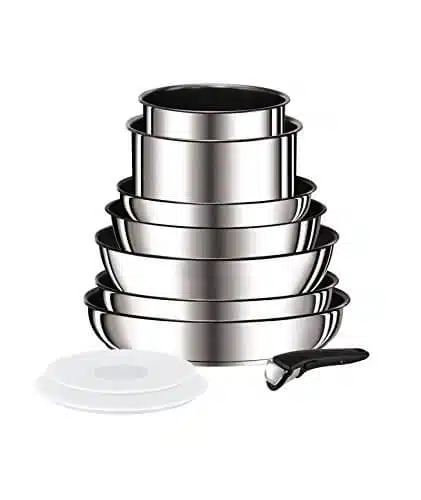Street Food at The Gog
These are the links to the recipes we cooked:
- Slow roast shoulder of lamb
- The Ultimate Burger
- Chicken Wings
- Hot Wings – these were just grilled and then Franks Hot Wing Sauce added with a squeeze of lime and some maldon salt.
- Korean Chicken Wings
- Sesame Roasted Falafel
- Pizza
Questions and Answers
Do you use the top or bottom vent to control the temperature?
I recommend using both the top and bottom vents together to control the temperature.
See my page on setting the temperature on your Big Green Egg.
Why am I having issues lighting my Egg and getting the temperature up?
To light an Egg you need three things:
- Fuel – lump wood charcoal
- Oxygen – air
- Heat
If you’re struggling to get the Egg lit and up to temperature fast it’s likely to be one of these three things lacking. Causes could be:
- Your charcoal is damp, make sure you always keep it inside out of the rain and dew.
- There isn’t enough airflow:
- You may need to clean your Egg. I recommend taking the ash out of your Egg every 5 or 6 cooks using the ash tool and doing a total clean, lifting the ceramics out, every 12-15 cooks.
- The charcoal you are using has too many smaller pieces, these will block the airflow.
It’s good practice to keep your Egg clean.
Cleaning your Egg
It’s essential you clean your Egg or all the vents will get clogged with ash and you’ll not be able to get it up to temperature.
- Every cook – rake the left over charcoal from the previous cook and let it fall down into the bottom of the Egg.
- Every 5 or 6 cooks – clear the ash from the bottom of your Egg using an ash tool. If you are going to hoover it out, make sure the ashes are cold, I have a customer who set fire to her Henry vacuum cleaner because the ash was still hot the following day.
- Every 12-15 cooks – lift out all the internals of your Egg and give everything a brush down with a dustpan and brush.
I'm doing an overnight cook at 110°C, how do i light it and get my Egg to 110°C?
I always light my Egg by putting a single lighter block into the middle of the charcoal and then covering it when lit with a couple of pieces of charcoal.
Is there any advantage to making sauce in the egg?
Anything cooked in the Egg is going to take on a very slight smokey flavour. The intensity of this flavour is going to depend on what charcoal you’re using. Big Green Egg’s charcoal is purely oak and hickory and has a strongish flavour. Use companies like Oxford Charcoal to get different blends or even single species charcoal.
Treat your charcoal as one of the ingredients of your cook.
When do I cook direct vs. indirect?
The way I like to think of this is that if you could cook whatever you’re cooking on the hob inside, then it’s a direct cook. If you need to cook it in the oven then it’s an indirect cook and you need to use the plate setter,
Obviously some things could be done either way, sausages for example. It’s the same inside, sausages can be cooked in a pan or baked in the oven.
Which way up do you use a plate setter? When do you use it feet down?
On the whole I use the plate setter feet up. The only time I will use it feet down is when I am cooking on the back of it. Great cooks to do on the plate setter are French Trimmed Rack of Lamb and my Truffle Oil and Black Sesame Cauliflower. You really must try both of these dishes, they’re amazing.
When do you start timing a cook, when you put the meat in or when the Egg has got back to temperature?
While timing a cook is a good indicator, it’s much better to check the temperature of most cooks to see if something is done. For example I’ll cook a chicken until the temperature in the thickest part of the meat is 74°C.
I always have a Thermapen handy to check the temperature. I also use the Thermoworks Smoke when doing longer cooks as I can leave this attached to the Egg and a probe in the meat. I can then monitor the cook from the other end (like a baby monitor).
How do you know which meat needs what temp?
There is a great chart from AmazingRibs.com that shows you all the best cooking temperatures for meat. I use a ThermaPen to measure the temperature of anything I am cooking.

How long does the pizza stone take to heat up?
Your pizza stone is going to take about 20 minutes to heat up when your Egg is to temperature.
When cooking pizza I prefer to have the plate setter feet up, the stainless grid on top and then the baking stone. The gap between the plate setter and the pizza stone will stop the pizza stone getting too hot and burning the bottom of your pizza base before the top is cooked.
Do you ever wash the equipment?
The only piece of kit in your Egg you should consider washing is the stainless steel grid. It’s OK to put this through the dishwasher.
Never wash any of the cast iron parts or the ceramic parts. Washing the cast iron will cause it to rust. Ceramic is porous and would soak up the water and could then cause damage to your Egg if it was heated rapidly, turning to steam.
To clean your Egg just turn it up to 350°C and it will burn off all the fats. Just wait until any smoke has stopped and you’ll find everything is clean.
I keep all my cooking surfaces and the metal daisy wheel inside the Egg, it’s the best place for them. You can put them straight in after a cook, even with the Egg hot.
Can you cook on higher temp for shorter time?
Yes you can cook a joint of meat faster at a higher temperature but the results may not be as good. For example when I cook a 3Kg pork shoulder it may take up to 19 hours to cook at 110°C. However at 120°C the same piece of meat would probably cook in 12 hours. The difference in cooking at a higher temperature is that you will have more air flowing past your food and drying it out. I prefer to cook at 110°C, the results are better.
What's the difference between loin and sirloin?
The loin and the sirloin are just different names for the same cuts but from different animals. The loin in a lamb is called the loin but when it’s beef we call it the sirloin. They both come from the same part of the animal.
Where is neck fillet in a lamb?
The lamb neck fillet sits on the shoulder joint of the lamb. At The Gog they leave it attached to the shoulder but many other butchers would take it off. In the photo below the neck fillet is the round muscle running along the right hand side.
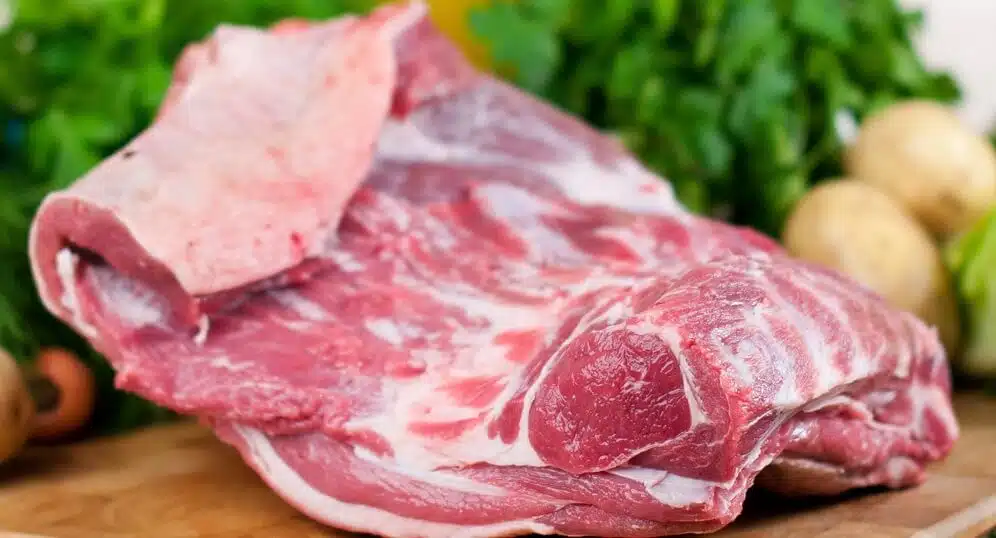
lamb, neck
Equipment
Thermapen
If there is one tool you have then I recommend it be the Thermapen. These handheld probe thermometers will transform the way you cook as you’ll know when something is ready rather than having to guess. I use the MK 4 version as it’s waterproof and has a backlit display that rotates so it’s always easy to read. You can buy them direct from my site or from Amazon. Either way they will be shipped direct from ETI, the UK manufacturer.
Thermoworks Smoke
The Thermoworks Smoke is my favourite wireless thermometer. One end is left by your BBQ and the other end you can take with you inside to monitor how the cook is going. It’s a brilliant product, very well made and easy to use. There are cheaper alternatives on the market but they’re not easy to use and the probes are poor quality.
Remember always bring the wires out of your Egg over one of the legs of the plate setter.
You can buy these from Amazon.
Tefal Ingenio Pans
I used these during the class to cook the sauces for the wings and for the pizza. They have removable handles and are really solid. I wouldn’t be without mine.
You can get them from Amazon using this link.
Korean Pastes
As I said in the class you can get these in several shops along Mill Road in Cambridge. The Korean Supermarket always have them.
You can also get them posted from Amazon. The chilli paste is here and the Soya bean paste here.
Private Classes
If you want to learn more and spend a day cooking using a lot of different techniques then you might want to think about one of my private classes. A typical day would involve the following techniques:
- Reverse Sear – cooking a Picanha, a Brazilian cut of rump
- Searing – both on the cast iron grid and dirty using rib-eye steaks
- Planks cooking – hot smoking salmon on a cedar plank
- Plancha cooking – cooking a French trimmed rack of lamb and some cauliflower directly on the plate setter
- Baking – rosemary and Maldon salt focaccia
- Pan cooking – an apple tarte tatin
